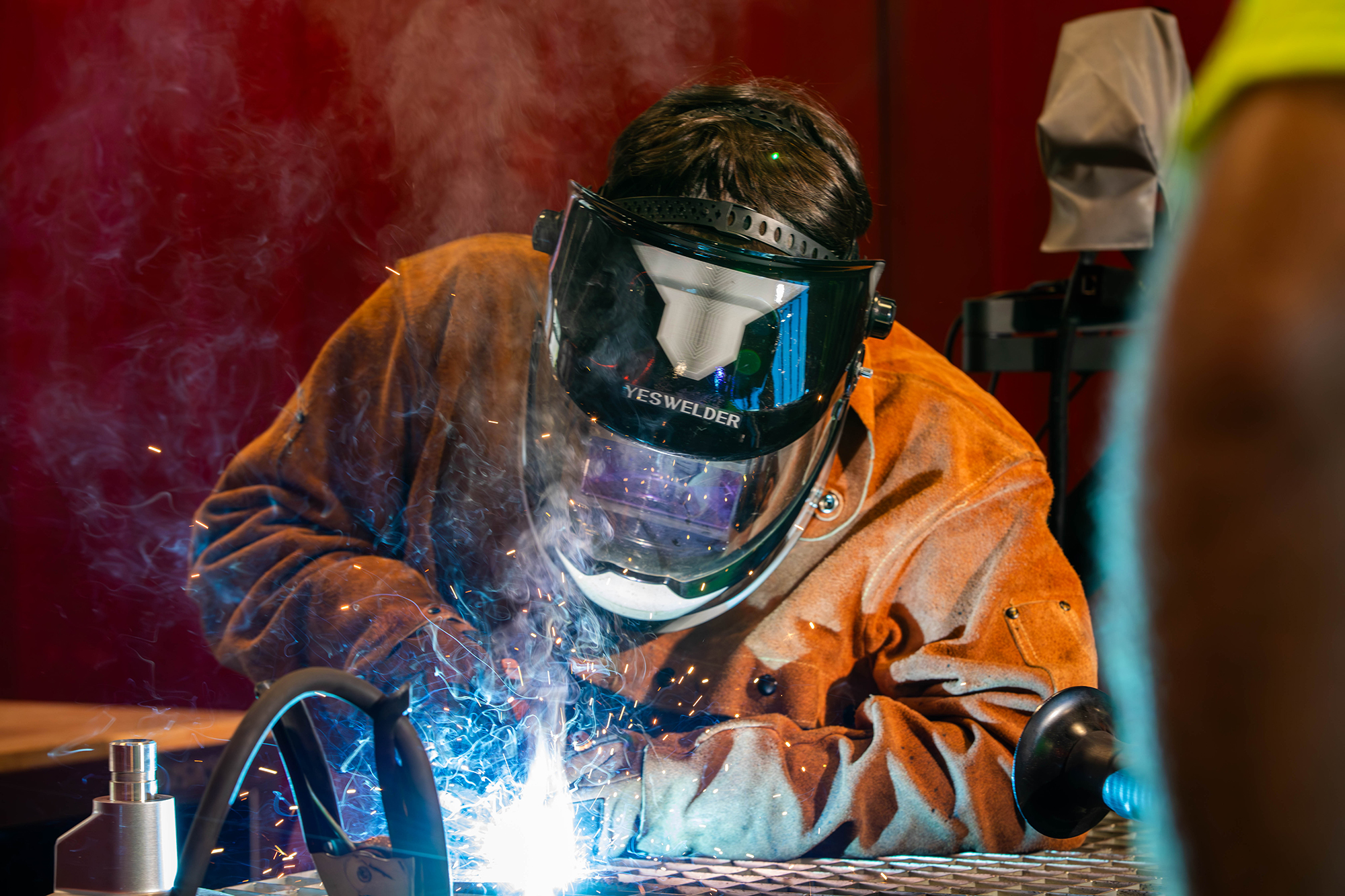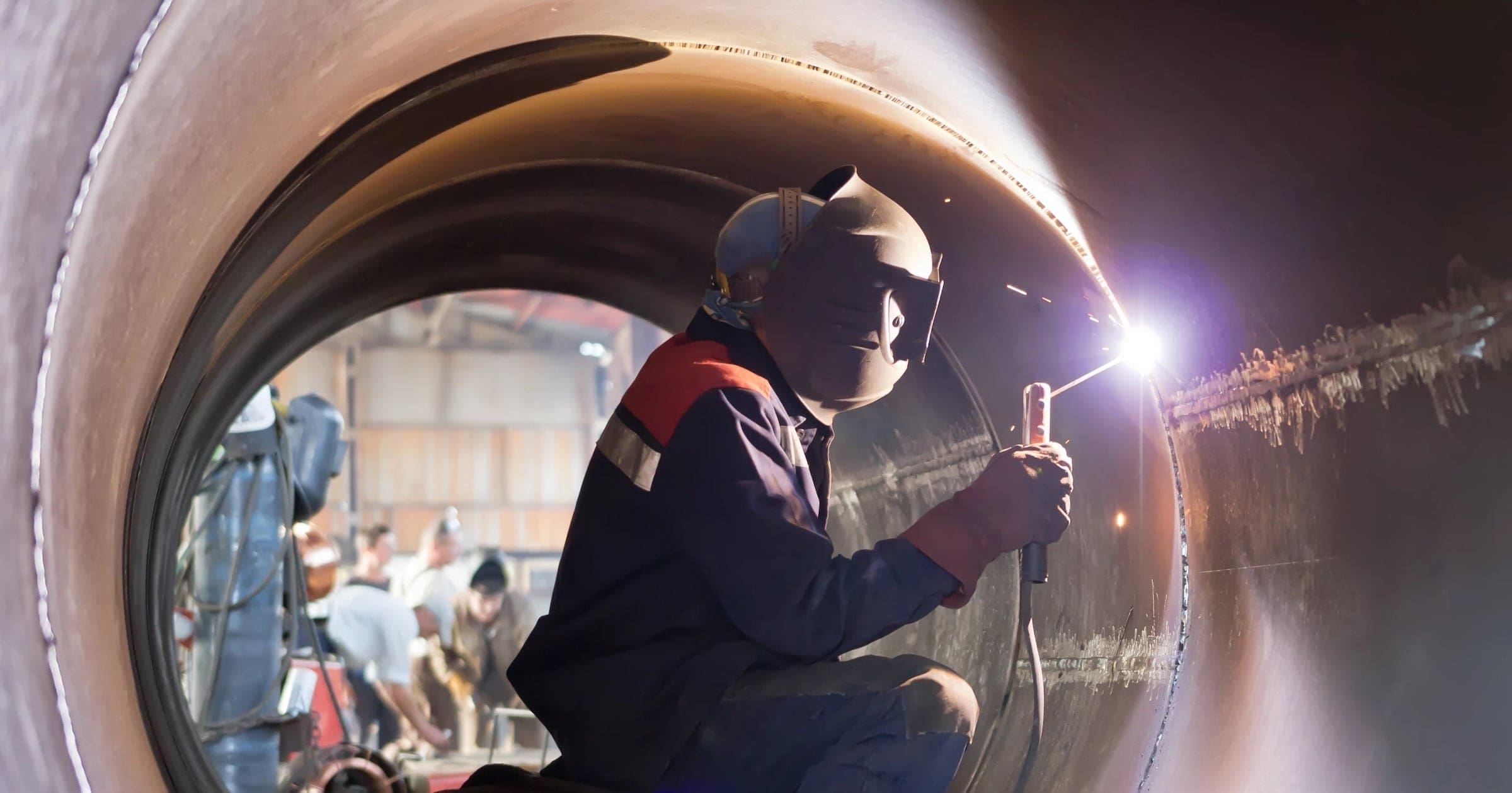Common Welding Repair Service Issues and Just How to Address Them Efficiently
Welding repair work frequently encounter a variety of issues that can endanger the stability of the end product. Usual problems include inadequate infiltration, porosity, and imbalance, to name a few. Each problem offers one-of-a-kind challenges that call for details methods for resolution. Comprehending these issues is vital for welders aiming to enhance their outcomes and skills. This discussion will discover these common welding fixing issues and effective approaches to address them.
Poor Infiltration
Poor infiltration takes place when the weld steel stops working to totally fuse with the base product, leading to weak joints and potential architectural failings. This concern frequently comes from insufficient heat input, inaccurate electrode angle, or improper welding speed. Welders may encounter inadequate penetration because of a miscalculation of the essential specifications for a details material density or type. Furthermore, contamination on the base product's surface can hinder effective bonding, worsening the trouble. To resolve inadequate infiltration, welders ought to ensure appropriate settings on their equipment and maintain a clean job surface. Normal assessment of welds is advised to identify any type of deficiencies early, enabling for prompt improvements and the prevention of compromised structural stability in welded settings up.
Porosity
Porosity is a common flaw in welded joints that manifests as little gas bubbles caught within the weld steel. This defect can endanger the stability of the weld, resulting in reduced strength and prospective failure under stress. Montana Mobile Welding and Repair Fabrication. Porosity commonly occurs from contamination, moisture, or inappropriate welding techniques, which enable gases to run away into the molten weld pool. To attend to porosity, welders need to ensure appropriate surface area prep work, maintain a tidy working setting, and utilize suitable welding specifications. Furthermore, picking the right filler product and shielding gas can reduce gas entrapment. Normal inspection and testing of welds can help determine porosity early, guaranteeing prompt restorative actions are taken, thereby preserving the high quality and dependability of the bonded framework
Misalignment
Misalignment in welding can develop from different elements, including improper setup and thermal expansion. Comprehending the origin is important for effective resolution. A number of modification techniques are readily available to realign parts and assure structural integrity.
Reasons of Imbalance
Welding imbalance frequently originates from a variety of underlying problems that can endanger structural honesty. One main cause is improper fit-up of components prior to welding, which can cause voids and uneven surface areas. Variations in thermal growth throughout the welding process can likewise lead to distortion, especially if the materials being signed up with have various coefficients of expansion. Additionally, inadequate securing and fixturing might fall short to hold elements firmly in position, bring about activity throughout welding. Improperly kept tools, including welding machines and tools, may introduce variances in the weld grain, further adding to misalignment. Driver error, stemming from inadequate training or experience, can likewise play a considerable function in developing misaligned welds.

Correction Strategies Offered
Addressing misalignment properly calls for a mix of restorative strategies customized to the certain issues available. One typical approach is the use of jigs or fixtures to hold elements in the right setting during welding, making certain regular alignment. Additionally, preheating the products can help in reducing distortion and boost fit-up. For significant imbalance, mechanical adjustment techniques, such as making use of hydraulic jacks or clamps, can be employed to deal with the position before welding. Post-weld heat treatment may additionally be required to alleviate tensions triggered by misalignment. Cautious evaluation and adjustment throughout the setup stage can avoid imbalance issues from becoming significant problems, advertising a smoother welding process and enhancing overall structural integrity.
Distortion
Distortion is an usual obstacle in welding that can develop from different factors, consisting of unequal heating & cooling. Recognizing the sources of distortion is necessary for applying reliable prevention techniques. Resolving this concern not only boosts structural honesty yet additionally improves the total top quality of the weld.
Reasons for Distortion
When based on the extreme warmth of welding, products often undergo adjustments that can cause distortion. This sensation largely develops from thermal development and tightening throughout the welding procedure. As the weld location warms up, the material broadens; upon cooling, it acquires, which can develop inner tensions. Additionally, unequal home heating across a work surface can worsen these anxieties, leading to bending or bending. The sort of material likewise plays a significant role; steels with differing thermal conductivity and coefficients of development might react in a different way, leading to unpredictable distortions. Inadequate joint layout and poor fixturing can contribute to imbalance during welding, boosting the likelihood of distortion. Recognizing these causes is important for effective welding repair work and avoidance strategies.
Prevention Techniques
Efficient avoidance techniques for distortion during welding concentrate on controlling warmth input and guaranteeing appropriate joint layout. Maintaining a regular warm input aids to reduce thermal growth and contraction, which can lead to distortion. Making use of strategies such as pre-heating the workpiece can also minimize the temperature level gradient, promoting consistent home heating. Furthermore, picking appropriate joint layouts, such as T-joints or lap joints, can enhance security and lower stress concentrations. Implementing correct fixturing to safeguard the work surfaces in area even more aids in maintaining positioning during the welding procedure. Staggered welding series can distribute heat extra uniformly, stopping localized distortion. By using these methods, welders can substantially reduce the possibility of distortion and boost the total top quality of their welds.
Cracking
Fracturing is a common issue experienced in welding repair services, frequently resulting from different aspects such as inappropriate cooling prices, product choice, or inadequate joint prep work. The occurrence of cracks can considerably endanger the honesty of the weld, bring about prospective failings during operation. To resolve this concern, welders must initially examine the source, guaranteeing that products work and appropriately picked for the certain application. Additionally, controlling the cooling price throughout the welding procedure is important; quick air conditioning can generate tension and bring about splitting. Correct joint layout and preparation likewise add to reducing the risk. Carrying out these techniques can enhance weld high quality and resilience, inevitably reducing the probability of splitting in ended up weldments.

Insufficient Fusion
A substantial concern in welding repair services is incomplete combination, which happens when the weld metal does not appropriately bond with the base product or previous weld passes - Welding. This issue can result in weak points in the joint, possibly compromising the honesty of the welded framework. Factors contributing to incomplete blend include not enough warmth input, inappropriate welding strategy, and contamination of the surfaces being joined. To resolve this concern properly, welders need to assure correct pre-weld cleaning and surface prep work, in addition to adjust their welding specifications to attain ample infiltration and combination. Regular evaluation throughout the welding process can also assist recognize incomplete reference combination early, permitting for prompt corrective procedures to boost the total top quality of the weld
Overheating
While welding repair services can boost structural integrity, overheating offers a substantial challenge that can bring about product deterioration. Extreme heat during welding can change the mechanical buildings of metals, leading to lowered strength, raised brittleness, and bending. This phenomenon is specifically essential in high-stress applications where structural reliability is paramount. Recognizing getting too hot can include aesthetic evaluations for discoloration or distortion, along with checking temperature level throughout the welding procedure. To alleviate the dangers related to overheating, welders should use suitable techniques, such as controlling heat input, changing traveling rate, and making use of ideal filler products. Furthermore, carrying out pre- and post-weld warm therapies can aid restore product residential or commercial properties and improve the general top quality of the repair work, making sure long-term performance and safety.
Frequently Asked Concerns
What Are the Typical Indicators of a Welding Flaw?

Exactly How Can I Check My Welds for High quality?
To evaluate welds for quality, one can utilize aesthetic assessments, ultrasonic screening, and radiographic techniques. Each technique guarantees architectural honesty, identifies issues, and validates adherence to defined criteria, inevitably boosting the integrity of the welded joints.
What Safety Preventative Measures Should I Take While Welding?
When welding, one should focus on security by putting on ideal personal protective equipment, ensuring correct air flow, protecting flammable materials away, keeping a tidy work area, and knowing surroundings to stop crashes and injuries.
Can I Repair a Weld Without Renovating the Entire Joint?
Fixing a weld without remodeling the whole joint is feasible, depending on the damage (Belgrade Fabrication). Methods such as grinding, including filler material, or utilizing a welding process can successfully attend to specific imperfections while preserving the bordering structure
What Devices Are Vital for Effective Welding Fixes?
Vital tools for reliable welding repairs include a welding maker, cable brush, grinder, protective equipment, clamps, and filler products. Each tool plays a crucial role in making sure top quality and security during the fixing process. Porosity normally arises from contamination, wetness, or incorrect welding techniques, which enable gases to get away into the liquified weld swimming pool. Inadequately conserved equipment, including welding machines and tools, might introduce variances in the weld grain, additional contributing to misalignment. When subjected to the extreme heat of welding, materials commonly undergo modifications that can lead to distortion. Fracturing is an usual concern run into in welding repairs, typically resulting from different aspects click for info such as inappropriate air conditioning prices, material selection, or insufficient joint preparation. A substantial issue in welding repair work is insufficient combination, which takes place when the weld steel does not sufficiently bond with the base material or previous weld passes.